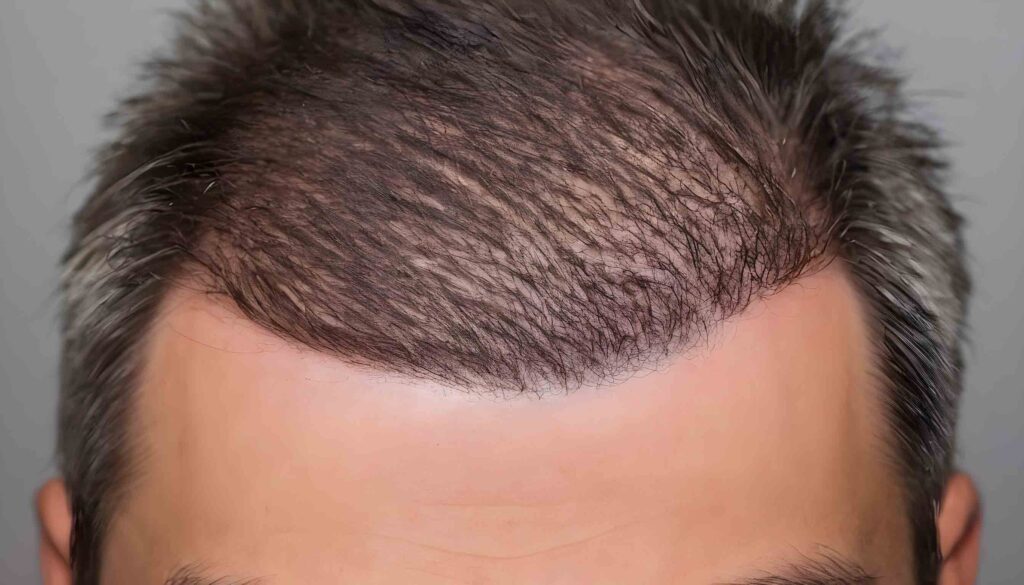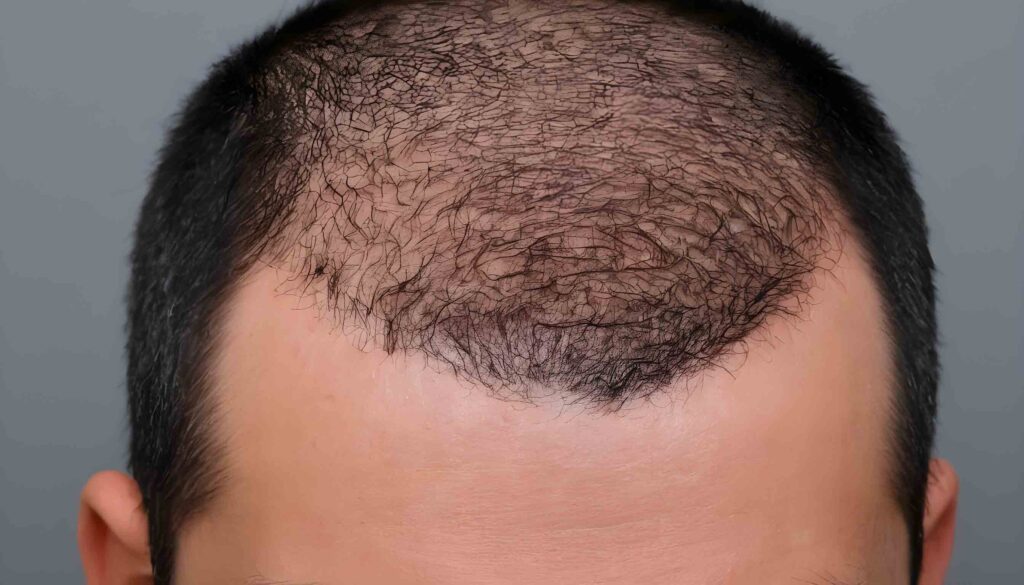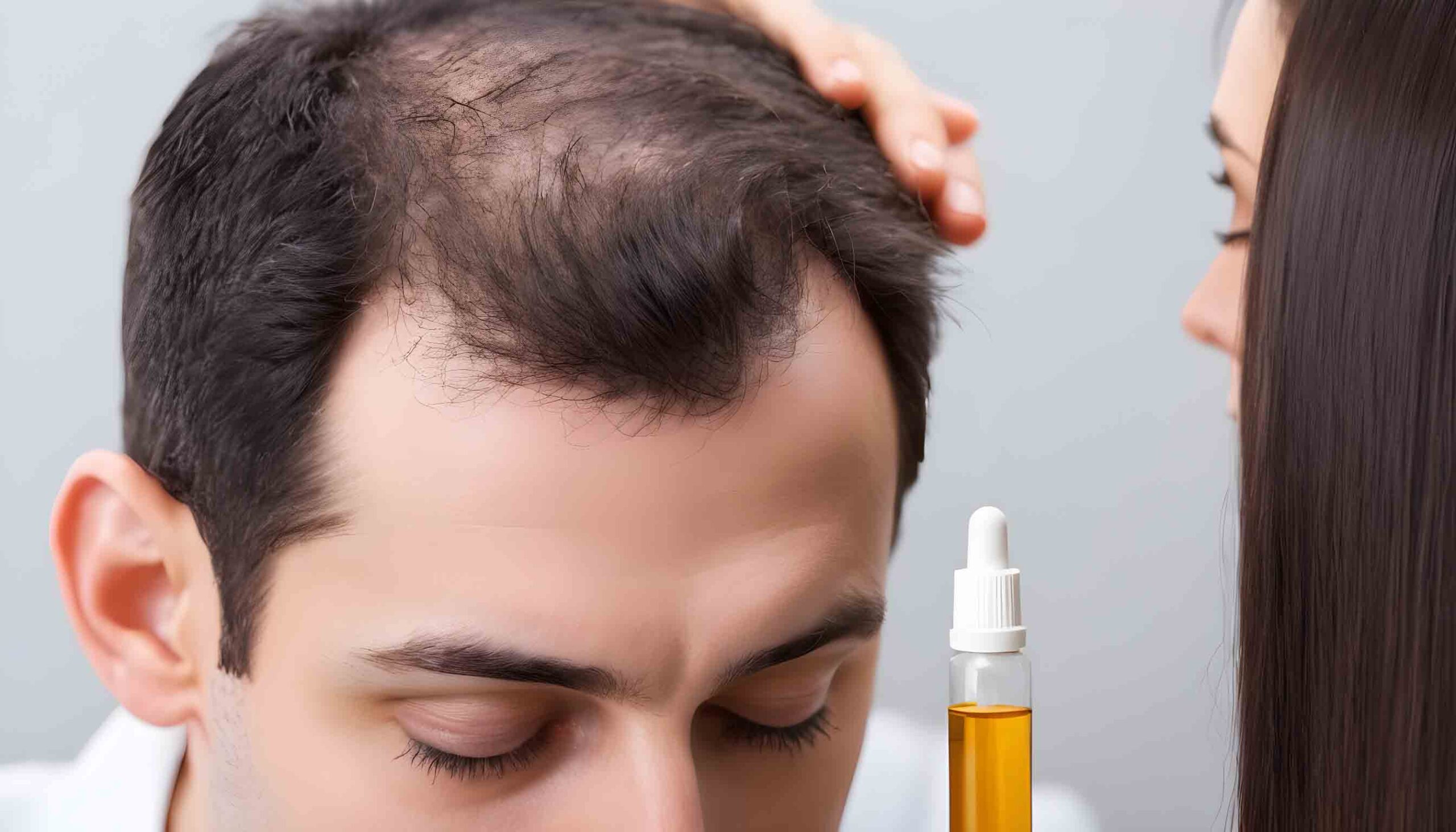In today’s world, drug testing has become an essential aspect of various sectors, including employment, legal, and medical fields. While traditional methods like urine analysis have been widely used, Hair Follicle Drug Test info has emerged as a more reliable and comprehensive approach to detecting drug use. This article aims to provide comprehensive information about Hair Follicle Drug Testing, including its accuracy, cost, procedures and frequently asked questions.
What is a Hair Follicle Drug Test?
A Hair Follicle Drug Test, also known as a Hair Analysis or Hair Drug Screening, is a method of detecting the presence of drugs and their metabolites in an individual’s hair sample. Unlike other drug testing methods that only detect recent drug use, a Hair Follicle Drug Test can provide a longer detection window, typically up to 90 days or even longer, depending on the length of the hair sample.
Why are Hair Follicle Drug Tests Necessary?
Hair Follicle Drug Tests are necessary for several reasons:
- Detection of Long-Term Drug Use: Unlike urine or blood tests, which can only detect recent drug use, Hair Follicle Drug Tests can detect patterns of drug use over an extended period, making them beneficial for identifying chronic drug misuse or abstinence.
- Minimizing Tampering and Cheating: Hair samples are less susceptible to tampering or substitution than other specimens, such as urine or oral fluid, reducing the potential for cheating during the drug testing process.
- Forensic and Legal Purposes: Hair Follicle Drug Tests are widely accepted in legal and forensic settings, providing reliable evidence of drug use or abstinence in cases involving criminal investigations, child custody disputes, or workplace incidents.
- Employment and Workplace Safety: Many employers require Hair Follicle Drug Tests as part of their pre-employment screening or random drug testing programs to maintain a safe and drug-free workplace.
- Medical and Rehabilitation Monitoring: Healthcare professionals may utilize Hair Follicle Drug Tests to monitor patients’ compliance with prescribed medications or assess the effectiveness of substance abuse treatment programs.
Follicle Drug Test Hair Info: Unveiling Past Substance Use

A follicle drug test, also known as hair analysis, is a type of drug screening that detects drug metabolites trapped within hair strands. Unlike urine tests with a short detection window, hair analysis can reveal chronic drug use or misuse for up to 90 days. This method is valuable in forensic toxicology, employment testing, and monitoring substance abuse treatment programs.
The test looks for drug metabolites incorporated into hair as it grows. Hair growth rate and melanin content can influence the detection window. Interpretation considers factors like hair treatments, environmental exposures, and prescribed medications to ensure accurate results.
Follicle Drug Testing: A Deep Dive into Hair Analysis

Hair follicle drug testing, also known as hair analysis, offers a unique window into past drug use. Unlike urine tests with a limited detection window, hair analysis can reveal evidence of chronic drug use (misuse or abuse) for up to 3 months. This extended window makes it valuable for various purposes, including forensic investigations (forensic toxicology), employment drug screening to ensure workplace safety, and monitoring individuals in drug rehabilitation programs.
The test works by analyzing hair strands for the presence of drug metabolites. These metabolites become trapped within the hair shaft as it grows, providing a historical record of drug exposure. However, factors like individual hair growth rate, melanin content, and potential external influences (hair treatments, environmental exposures) can affect the detection window and test interpretation. To ensure accuracy, labs consider these factors alongside the test results themselves.
The Truth in Your Hair: Understanding Follicle Drug Testing

Follicle drug testing, which analyzes hair strands for drug traces, offers a distinct advantage over other methods. Unlike urine tests with a short detection window, hair analysis can reveal a history of drug use (both chronic misuse and abuse) for up to 90 days. This extended window makes it valuable for various applications. It’s used in forensic toxicology to investigate past substance use in legal cases, employment drug screening to ensure a safe workplace, and monitoring progress in drug rehabilitation programs.
The test detects drug metabolites trapped within the hair shaft as it grows, providing a timeline of past drug exposure. However, factors like individual hair growth rate, melanin levels, and external influences (hair treatments, environmental exposures) can affect the detection window and interpretation of results. To ensure accuracy, labs consider these factors alongside the test results themselves.
What Happens During a Hair Follicle Drug Test?
The process of a Hair Follicle Drug Test typically involves the following steps:
- Hair Sample Collection: A small sample of hair, typically from the crown of the head, is collected by a trained professional. If head hair is unavailable or insufficient, body hair, such as from the underarm or leg, may be used instead.
- Sample Preparation: The hair sample is carefully prepared and divided into segments, with each segment representing a specific time period based on the average hair growth rate.
- Initial Screening Test: The hair sample undergoes an initial screening test, often an immunoassay or enzyme-linked immunosorbent assay (ELISA), to detect the presence of specific drug classes or their metabolites.
- Confirmatory Testing: If the initial screening test is positive, the sample is subjected to confirmatory testing using more advanced analytical techniques, such as gas chromatography-mass spectrometry (GC-MS) or liquid chromatography-tandem mass spectrometry (LC-MS/MS). These methods provide highly accurate and precise identification and quantification of the drugs or their metabolites present in the hair sample.
- Result Interpretation: The results are interpreted based on established cutoff values and guidelines, taking into account factors such as hair color, chemical treatments, and environmental exposures that may influence the results.
How to Use a Home Hair Follicle Drug Test
While professional Hair Follicle Drug Tests are typically conducted in certified laboratories or healthcare facilities, several home testing kits are available for personal use. These kits generally involve the following steps:
- Hair Sample Collection: Following the kit instructions, a small hair sample is collected from the head or body.
- Sample Preparation: The hair sample is prepared according to the kit’s instructions, which may involve cutting, measuring, or packaging the hair in a specific manner.
- Testing Procedure: The hair sample is tested using the provided testing materials, which may involve chemical reagents, test strips, or other components. The testing process may vary depending on the specific kit.
- Result Interpretation: The test results are interpreted based on the kit’s instructions, which typically provide guidance on reading the results and understanding their implications.
It is important to note that home hair follicle drug testing kits may not be as accurate or reliable as professional laboratory-based tests and should be used with caution, especially for legal or employment purposes.
What Do the Results Mean?
The results of a Hair Follicle Drug Test can be interpreted as follows:
- Positive Result: A positive result indicates the presence of drugs or their metabolites in the hair sample, indicating drug exposure or use during the detection window.
- Negative Result: A negative result means that no drugs or their metabolites were detected in the hair sample above the established cutoff values.
It is important to note that Hair Follicle Drug Tests have established cutoff values, which are the minimum concentrations of drugs or metabolites required to produce a positive result. These cutoff values help to differentiate between intentional drug use and potential environmental exposures or contamination.
How Accurate are Hair Follicle Drug Tests?
Hair Follicle Drug Tests are generally considered highly accurate and reliable when performed by certified laboratories using established procedures and quality control measures. The accuracy of these tests is attributed to several factors:
- Longer Detection Window: Hair Follicle Drug Tests can detect drug use over an extended period, typically up to 90 days or longer, depending on the hair length. This extended detection window reduces the chances of false negatives due to temporary abstinence or sporadic drug use.
- Reduced Risk of Tampering: Hair samples are less susceptible to tampering or substitution compared to other specimen types, such as urine or oral fluid.
- Advanced Analytical Techniques: Confirmatory testing using advanced techniques like GC-MS or LC-MS/MS provides highly accurate and precise identification and quantification of drugs and their metabolites.
- Established Guidelines and Cutoff Values: Strict guidelines and cutoff values are in place to minimize the risk of false positives due to environmental exposures or external contamination.
However, it is important to note that Hair Follicle Drug Tests are not 100% accurate and can be affected by factors such as hair color, chemical treatments, environmental exposures, and individual differences in drug metabolism and excretion.
Cost of Hair Follicle Drug Tests
The cost of a Hair Follicle Drug Test can vary depending on several factors, including the testing facility, the number of drugs being tested for, and the location. On average, the cost ranges from $50 to $150 per test.
Some key factors that influence the cost of Hair Follicle Drug Tests include:
- Testing Facility: Laboratory-based tests conducted by certified facilities or healthcare providers typically cost more than home testing kits or less regulated testing services.
- Number of Drugs Tested: Testing for a broader panel of drugs or specific substances can increase the cost compared to testing for a limited number of drugs.
- Location: Costs may vary based on the region or country where the testing is performed due to differences in local regulations, labor costs, and overhead expenses.
- Additional Services: Some testing facilities or providers may offer additional services, such as sample collection, result interpretation, or consultation, which can add to the overall cost.
It’s important to note that while Hair Follicle Drug Tests may be more expensive than other methods like urine testing, the higher cost is often justified by the increased accuracy, longer detection window, and reduced risk of tampering or substitution.
What If a Person Has No Hair on Their Head?
In cases where an individual has no hair on their head, alternative hair samples can be collected for a Hair Follicle Drug Test. Common sources of alternative hair samples include:
- Body Hair: Hair from other body parts, such as the underarm, chest, leg, or arm, can be used for the test. However, it’s important to note that body hair may have different growth rates and drug incorporation patterns compared to head hair, which can affect the detection window.
- Pubic Hair: Pubic hair can be an acceptable alternative if no other hair sources are available. However, collecting pubic hair samples may raise privacy concerns and require additional precautions.
- Facial Hair: For individuals with sufficient facial hair, such as a beard or mustache, these hair samples can be used for the test.
If no hair sample is available from any source, alternative drug testing methods, such as urine, blood, or oral fluid testing, may need to be considered.
Hair Follicle Test vs. Urine Test
While both Hair Follicle Drug Tests and Urine Tests are commonly used for drug testing, they differ in several key aspects:
- Detection Window: Hair Follicle Drug Tests have a much longer detection window, typically up to 90 days or more, compared to urine tests, which can only detect drug use within a few days or weeks.
- Sample Tampering: Hair samples are less susceptible to tampering or substitution compared to urine samples, which can be more easily adulterated or substituted.
- Drug Use Patterns: Hair Follicle Drug Tests can provide insights into patterns of drug use over an extended period, while urine tests primarily indicate recent drug use.
- Environmental Exposures: Hair Follicle Drug Tests are less affected by environmental exposures or secondhand smoke compared to urine tests, which can be more sensitive to external factors.
- Cost: Hair Follicle Drug Tests are generally more expensive than urine tests due to the advanced analytical techniques and longer detection window.
- Sample Collection: Hair sample collection is considered less invasive and more convenient compared to urine sample collection, which may require specialized facilities or observations.
The choice between a Hair Follicle Drug Test and a Urine Test often depends on the specific needs and requirements of the testing situation, such as the desired detection window, the risk of tampering, and the available resources.
What Does the Test Measure?
A Hair Follicle Drug Test measures the presence and concentration of drugs or their metabolites that are incorporated into the hair shaft during the hair growth process. Drugs and their metabolites can become trapped in the hair follicle and are subsequently incorporated into the hair structure as it grows.
The test can detect a wide range of substances, including:
- Illicit Drugs: Substances like marijuana, cocaine, amphetamines, opioids (e.g., heroin, morphine), and other controlled substances.
- Prescription Medications: Certain prescription drugs, such as opioid painkillers, benzodiazepines, and certain antidepressants, can be detected in hair follicle tests.
- Over-the-Counter Medicines: Some over-the-counter medications or supplements containing prohibited substances may also be detected.
- Legal Substances: The test can detect the presence of legal substances like alcohol, nicotine, and certain medications or supplements.
It’s important to note that Hair Follicle Drug Tests do not directly measure impairment or intoxication levels but rather provide information about past drug exposure or use over an extended period.
When Should I Get a Hair Follicle Drug Test?
There are several situations where a Hair Follicle Drug Test may be recommended or required:
- Employment Screening: Many employers require Hair Follicle Drug Tests as part of their pre-employment screening process or ongoing random drug testing programs to maintain a safe and drug-free workplace.
- Legal Proceedings: Hair Follicle Drug Tests may be ordered in legal cases, such as child custody disputes, criminal investigations, or probation monitoring, to provide evidence of drug use or abstinence.
- Medical and Rehabilitation Monitoring: Healthcare professionals may utilize Hair Follicle Drug Tests to monitor patients’ compliance with prescribed medications or assess the effectiveness of substance abuse treatment programs.
- Personal Reasons: Individuals may choose to undergo a Hair Follicle Drug Test for personal reasons, such as monitoring their own drug use or abstinence, or to verify the accuracy of other drug test results.
It’s important to consult with relevant authorities, healthcare professionals, or legal advisors to determine the appropriate situation and requirements for undergoing a Hair Follicle Drug Test.
Finding a Hair Follicle Drug Test
If you need to undergo a Hair Follicle Drug Test, there are several options available:
- Healthcare Providers: Many hospitals, clinics, and medical laboratories offer Hair Follicle Drug Testing services. You may need a referral or prescription from a healthcare provider to access these services.
- Drug Testing Facilities: Specialized drug testing facilities or laboratories offer Hair Follicle Drug Testing services to individuals, employers, and legal entities.
- Online Services: Several online companies provide Hair Follicle Drug Testing kits that can be purchased and used at home. However, it’s important to carefully research and verify the reliability and accuracy of these kits.
- Employer or Legal Referrals: If the Hair Follicle Drug Test is required for employment or legal purposes, your employer or legal representative may provide specific instructions or referrals for authorized testing facilities.
When choosing a Hair Follicle Drug Testing service, it’s essential to consider factors such as the facility’s or provider’s reputation, accreditation, and adherence to industry standards and guidelines. Additionally, you should inquire about the testing procedures, sample handling protocols, and result interpretation methods to ensure the accuracy and reliability of the test.
Hair Follicle Drug Test Results
The results of a Hair Follicle Drug Test are typically reported in one of two ways:
- Qualitative Results: These results indicate whether drugs or their metabolites are present or absent in the hair sample. A positive result means that drugs or their metabolites were detected above the established cutoff levels, while a negative result indicates that no drugs were detected.
- Quantitative Results: In addition to indicating the presence or absence of drugs, quantitative results provide the actual concentration levels of the detected substances. This information can be useful in determining the extent of drug exposure or identifying patterns of drug use over time.
It’s important to note that Hair Follicle Drug Test results should be interpreted in the context of established cutoff values and guidelines, taking into account factors such as hair color, chemical treatments, and potential environmental exposures that may influence the results.
Hair Follicle Drug Test results are typically reported along with supporting documentation, such as chain-of-custody forms and laboratory certifications, to ensure the integrity and reliability of the testing process.
Everything You Should Know About a Hair Strand Drug Test
A Hair Strand Drug Test, also known as a Hair Follicle Drug Test or Hair Analysis, is a reliable and comprehensive method of detecting drug use over an extended period. This test analyzes a small sample of hair, typically from the crown of the head, to determine the presence of drugs or their metabolites.
What Happens During the Test?
The process of a Hair Strand Drug Test typically involves the following steps:
- Hair Sample Collection: A trained professional collects a small sample of hair, usually between 90 and 120 strands, from the crown of the head or another body area if head hair is unavailable.
- Sample Preparation: The hair sample is carefully prepared and divided into segments, with each segment representing a specific time period based on the average hair growth rate of approximately 0.5 inches per month.
- Initial Screening Test: The hair sample undergoes an initial screening test, often an immunoassay or enzyme-linked immunosorbent assay (ELISA), to detect the presence of specific drug classes or their metabolites.
- Confirmatory Testing: If the initial screening test is positive, the sample is subjected to confirmatory testing using advanced analytical techniques, such as gas chromatography-mass spectrometry (GC-MS) or liquid chromatography-tandem mass spectrometry (LC-MS/MS). These methods provide highly accurate and precise identification and quantification of the drugs or their metabolites present in the hair sample.
- Result Interpretation: The results are interpreted based on established cutoff values and guidelines, taking into account factors such as hair color, chemical treatments, and environmental exposures that may influence the results.
Understanding Your Results
The results of a Hair Strand Drug Test can be interpreted as follows:
- Positive Result: A positive result indicates the presence of drugs or their metabolites in the hair sample, suggesting drug exposure or use during the detection window.
- Negative Result: A negative result means that no drugs or their metabolites were detected in the hair sample above the established cutoff values.
It’s important to note that Hair Strand Drug Tests have established cutoff values, which are the minimum concentrations of drugs or metabolites required to produce a positive result. These cutoff values help distinguish between intentional drug use and potential environmental exposures or contamination.
How Accurate is the Test?
Hair Strand Drug Tests are generally considered highly accurate and reliable when performed by certified laboratories using established procedures and quality control measures. Several factors contribute to the accuracy of these tests:
- Longer Detection Window: Hair Strand Drug Tests can detect drug use over an extended period, typically up to 90 days or longer, depending on the hair length. This extended detection window reduces the chances of false negatives due to temporary abstinence or sporadic drug use.
- Reduced Risk of Tampering: Hair samples are less susceptible to tampering or substitution compared to other specimen types, such as urine or oral fluid.
- Advanced Analytical Techniques: Confirmatory testing using advanced techniques like GC-MS or LC-MS/MS provides highly accurate and precise identification and quantification of drugs and their metabolites.
- Established Guidelines and Cutoff Values: Strict guidelines and cutoff values are in place to minimize the risk of false positives due to environmental exposures or external contamination.
However, it is important to note that Hair Strand Drug Tests are not 100% accurate and can be affected by factors such as hair color, chemical treatments, environmental exposures, and individual differences in drug metabolism and excretion.
How Much Does the Test Cost?
The cost of a Hair Strand Drug Test can vary depending on several factors, including the testing facility, the number of drugs being tested for, and the location. On average, the cost ranges from $50 to $150 per test.
Some key factors that influence the cost of Hair Strand Drug Tests include:
- Testing Facility: Laboratory-based tests conducted by certified facilities or healthcare providers typically cost more than home testing kits or less regulated testing services.
- Number of Drugs Tested: Testing for a broader panel of drugs or specific substances can increase the cost compared to testing for a limited number of drugs.
- Location: Costs may vary based on the region or country where the testing is performed due to differences in local regulations, labor costs, and overhead expenses.
- Additional Services: Some testing facilities or providers may offer additional services, such as sample collection, result interpretation, or consultation, which can add to the overall cost.
It’s important to note that while Hair Strand Drug Tests may be more expensive than other methods like urine testing, the higher cost is often justified by the increased accuracy, longer detection window, and reduced risk of tampering or substitution.
Hair vs. Urine Drug Test
While both Hair Strand Drug Tests and Urine Tests are commonly used for drug testing, they differ in several key aspects:
- Detection Window: Hair Strand Drug Tests have a much longer detection window, typically up to 90 days or more, compared to urine tests, which can only detect drug use within a few days or weeks.
- Sample Tampering: Hair samples are less susceptible to tampering or substitution compared to urine samples, which can be more easily adulterated or substituted.
- Drug Use Patterns: Hair Strand Drug Tests can provide insights into patterns of drug use over an extended period, while urine tests primarily indicate recent drug use.
- Environmental Exposures: Hair Strand Drug Tests are less affected by environmental exposures or secondhand smoke compared to urine tests, which can be more sensitive to external factors.
- Cost: Hair Strand Drug Tests are generally more expensive than urine tests due to the advanced analytical techniques and longer detection window.
- Sample Collection: Hair sample collection is considered less invasive and more convenient compared to urine sample collection, which may require specialized facilities or observations.
The choice between a Hair Strand Drug Test and a Urine Test often depends on the specific needs and requirements of the testing situation, such as the desired detection window, the risk of tampering, and the available resources.
Conclusion
Hair Follicle Drug Testing has emerged as a reliable and comprehensive method for detecting drug use over an extended period. With its longer detection window, reduced risk of tampering, and advanced analytical techniques, Hair Follicle Drug Tests provide valuable insights into patterns of drug use or abstinence.
While more expensive than traditional urine tests, Hair Follicle Drug Tests offer several advantages, including a reduced risk of false negatives due to temporary abstinence or sporadic drug use, as well as the ability to provide quantitative results for more accurate interpretation.
The accuracy of Hair Follicle Drug Tests is heavily dependent on adherence to established guidelines, quality control measures, and consideration of factors such as hair color, chemical treatments, and environmental exposures that may influence the results.
As drug testing continues to play a crucial role in various sectors, including employment, legal, and medical fields, Hair Follicle Drug Testing is likely to become increasingly important, offering a comprehensive and reliable approach to detecting drug use and promoting a safe and drug-free environment.
Frequently Asked Questions (FAQs) Hair Follicle Drug Test Info
How Far Back Does a Hair Follicle Test Detect Drugs?
A Hair Follicle Drug Test can typically detect drug use for up to 90 days or longer, depending on the length of the hair sample. The detection window is determined by the hair growth rate, which is approximately 0.5 inches per month on average.
What Will Show Up in a Hair Follicle Test?
A Hair Follicle Drug Test can detect a wide range of substances, including illicit drugs (e.g., marijuana, cocaine, amphetamines, opioids), prescription medications (e.g., opioid painkillers, benzodiazepines, antidepressants), over-the-counter medications containing prohibited substances, and legal substances like alcohol and nicotine.
How Many Hair Follicles Are Needed for a Drug Test?
Typically, a Hair Follicle Drug Test requires a sample of approximately 90 to 120 strands of hair, with a length of around 1.5 inches (3.8 cm) or more. This amount of hair is considered sufficient for accurate testing and result interpretation.
What Is the Best Shampoo to Pass a Hair Drug Test?
There is no scientifically proven shampoo or hair product that can reliably help an individual pass a Hair Follicle Drug Test. The drugs and their metabolites are incorporated into the hair shaft during growth, and external products or treatments are generally ineffective in removing them from the hair structure.
How Long Will a Hair Follicle Test Show Drugs?
A Hair Follicle Drug Test can detect drug use for up to 90 days or longer, depending on the length of the hair sample. The detection window is determined by the hair growth rate, which is approximately 0.5 inches per month on average.
Can a Hair Follicle Drug Test Be Cheated?
While it is possible to attempt to cheat a Hair Follicle Drug Test, it is generally more difficult than cheating other types of drug tests, such as urine tests. Hair samples are less susceptible to tampering, substitution, or adulteration compared to other specimen types. However, attempting to cheat a drug test is considered unethical and may have legal consequences.
What Does Hair Analysis Show?
Hair analysis, or a Hair Follicle Drug Test, can show the presence and concentration of drugs or their metabolites that have been incorporated into the hair shaft during the hair growth process. It can detect a wide range of substances, including illicit drugs, prescription medications, over-the-counter medicines, and legal substances like alcohol and nicotine.
How Long Can Hair Follicle Detect Drugs?
A Hair Follicle Drug Test can typically detect drug use for up to 90 days or longer, depending on the length of the hair sample. The detection window is determined by the hair growth rate, which is approximately 0.5 inches per month on average.<h3>What Is the Use of a Hair Follicle?</h3>
The primary use of a Hair Follicle Drug Test is to detect the presence and patterns of drug use or exposure over an extended period, typically up to 90 days or longer. It is widely used in various settings, such as employment screening, legal proceedings, medical monitoring, and rehabilitation programs.
How Are Drugs Stored in Hair Follicles?
Drugs and their metabolites can become incorporated into the hair follicle during the hair growth process. As the hair grows, the drugs or metabolites are trapped in the hair shaft, allowing for their detection through Hair Follicle Drug Testing.




